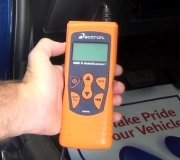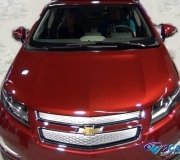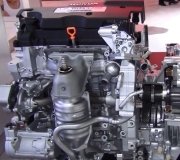Interchangeability used to be one of Chrysler's big strong points but lately there are so many changes made every year to keep up with ever-changing government regulations that it is almost impossible to tell. The engines will usually be the same but you have to consider that injectors could be different, therefore the Engine Computers will be different. If one injector is larger and flows more fuel, the computer will command it open for a shorter period of time. You can figure that out by comparing part numbers for the injectors for both years. I use rockauto. Com a lot for that. If you install an engine with smaller injectors, there won't be enough fuel going in. Also look at the wiring harness connectors. If they're the same for both years, there's a good chance the injectors are the same too.
Many people have been tricked by different flex plates. They have cutouts along the outer ring that are sensed by the crankshaft position sensor. It was common for them to be different from one year to the next. You could use an engine from a different year, but you had to put the flex plate on it that was original to the car.
Look too at engine mounts, exhaust manifolds and pipes, and serpentine belts. If you find different part numbers for different years, that doesn't automatically mean they're different. Superseded, or improved versions get new part numbers, but those new numbers should be listed for all model years. With Rock Auto you have to look up a part for both years, then compare part numbers, but if you ask at the dealer's parts department, they also have a part number listing that tells which years and models that part fits. That can be a faster way of finding out if the vehicles are the same. Also ask about remanufactured engines. Rather than looking up your car model and year, they typically look up the engine size, then read down the list of applications it fits. If both years are listed with no footnotes, you'll know the engines interchange. The engine specialists at the dealership will also know which years can be interchanged. The people at any salvage yard will also know what will work for you. They have "Hollander" books that list all parts and the applications they fit.
One thing to keep in mind with remanufactured engines from the dealer is to keep costs down, they are supplied with no wiring harnesses, and in some cases with no intake manifold or injectors. You're expected to transplant those items from the old engine. Because of that, the basic engine might be the same for many years but the injectors, intake manifold, exhaust manifolds, bolt-on accessories, and things like that could be different, so you might have to use parts from the original car. With a salvage engine, you get all the bolt-on stuff and wiring harnesses that can all be dropped in as a unit, as long as they're the same. That can save a lot of time. To be safe, besides just looking at harness connectors, they all have a paper label with their part number. Compare those numbers. If they're the same, they're the same. Many part numbers will end with "AA", "AB", or some other two letters. That means that part has some improvement over the original part but it should work. If the numbers are completely different but the connectors look the same, you have to compare wire colors and locations within the plug. Usually different harness numbers don't interchange, but the difference could be as insignificant as one is six inches longer because a component was mounted further away from the hot exhaust manifold one year as a reliability improvement, or one could have been shortened to save money. Unless changing it is a lot of work, it's usually just easier to reuse your old harness when the part numbers are different.
One last thing to be aware of with wiring harnesses is there could be more wires in one than on your car but it could still work. New replacement harnesses are very expensive so they are normally only provided when a car is still under warranty. To save money, the original harness will have only the wires needed on that car. As an example, there might be a 10-wire harness that has three wires in it for the cruise control. If they build 1000 cars without cruise control, they will use a specific harness without those three wires to save money. But to reduce the number of part numbers they have to keep in inventory, that replacement harness will have all ten wires in it so it will work on any application. You could potentially run into one of those replacement harnesses on a salvage yard engine. If your car doesn't have that accessory, those wires just don't do anything, but if your car does have that accessory, you must use the harness with those wires. Here again, if you're not sure, it's safest to reuse your old stuff.
Tuesday, May 1st, 2012 AT 1:00 AM




